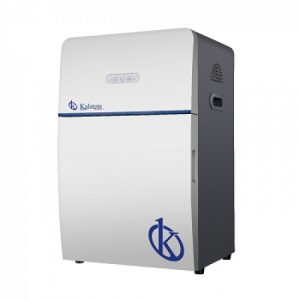At present, technological development allows to have documentation systems in gel, to apply to the needs of the laboratories, providing innovative solutions, both for the capture and for the study of the images, and are formed on the basis of the methodologies used by each researcher.
For this reason, researchers use the gel documentation equipment, to process information within high-resolution, multi-image recognition systems. According to this, the tool applied for the development of the system is due to gel electrophoresis, since it is applied in the laboratories of molecular, cellular and biochemical biology. That is why the processing of gels is important, because it requires the highest sensitivity, to ensure the quality of the results.
Importance of the Gel Document System
The study of images is developed in several fields, particularly in the field of medicine, for the clinical diagnosis of images, in which requires new technologies for proper comparison.
On the other hand, in the field of molecular biology, the study of the expressions and evolutionary regulations of diseases, reaches the comparisons of images of gels, through electrophoresis, of varied origin to detect differences and similarities between them.
The idea of a new computer system for documentation of gels, which is suitable for recognizing the evolution of biological techniques, has given rise to several research topics in data processing, including: image processing, image deformations, shape matching, machine learning, image classification based on quantitative values and the organization of image data.
In this sense, there is a growing interest in comparing and classifying images of different types, created from different biological samples, using different protocols, where digital images are acquired with different equipment (CCD, densitometers, phosphorus plates, etc.).
Methods for Gel Documentation
Imperfections or evolutions of images are often used to align them, the source and degree of distortion is unknown. The formation between two gels is done through pairing methods and are characterized by:
- Pixel-based methods.
- Methods based on primitive graphics (contours, points of interest, summits, etc.).
- Methods based on structured information (graphs, frames, etc.).
In the first category, the methods do not require an imaging procedure: equality is done by direct comparison of pixel values. On the other hand, the processes of the second category need a location and a parameter prior to the pairing process. As for the methods of the third category, they require a high-level representation, such as the characteristics of graphs, representing spatial relationships between objects.
In this sense, the documentation of gels, and the pairing methods, can be grouped into four categories, according to the degree of abstraction of the representation of the compared objects:
- Rendering space, for selecting some control points.
- As a measure of similarity, the corresponding control points are defined on the other gel (the gel to be aligned).
- Search space, calculated by minimizing the error of the corresponding control points, according to the method of least squares.
- Search strategy, the image is warped using the resulting transformations and bilinear interpolation.
In summary, the documentation of gels has become a common skill in the field of medicine, where methods are developed to overcome quantitative and qualitative treatments of gels, using techniques to filter images, without reducing contrast or understanding in detection, facilitating optimizing image classification.
This is a search for similarities and inequalities between images, in order to automatically manifest new markers of diseases and to automatically form classes, from a set of images.
Documentation of Geles brand Kalstein
At Kalstein, we are able to meet the demands of our users in the selection of laboratory equipment. We offer you, Gel Systems, corresponding to the YR series, which have attractive features, such as: Gel Inspection, through various Dyes, e.g.: etiduim Bromide, SYBR™ Gold, SYBR™ Green, SYBR™ Safe, GelStar™, Texas Red, Fluorescein, DNA / RNA detection marked. Protein Inspection: Comassie Brilliant Blue, Silver Staining and Fluorescent dyes, e.g. Sypro™ Red, Sypro™ Orange, Deep Purple, Pro-Q Diamond, etc.
To learn more about our products, visit HERE
At Kalstein, as manufacturers, we provide all the advice our customers need, so that their purchase is ideal, and at excellent prices.
Come visit us at HERE


